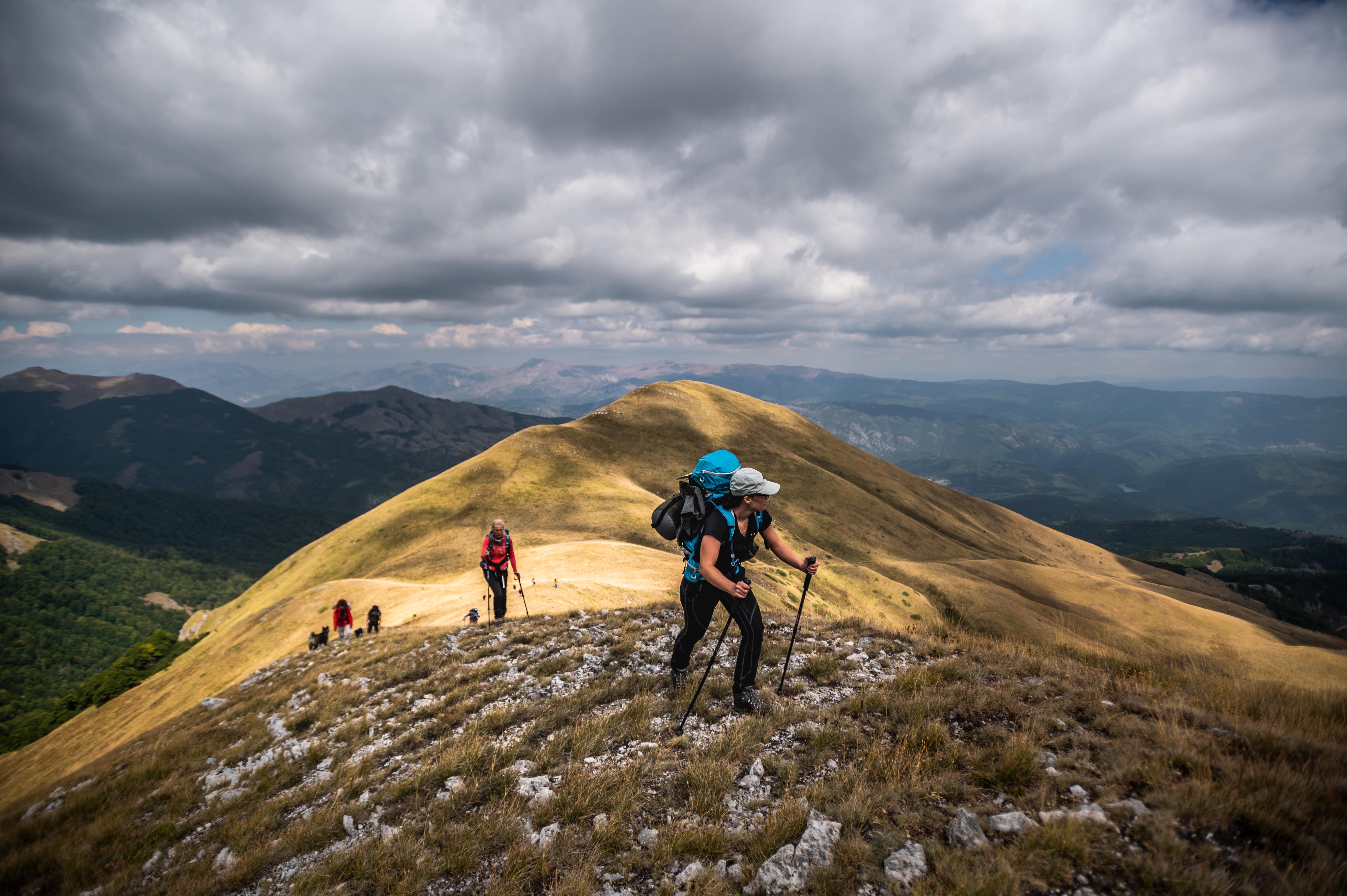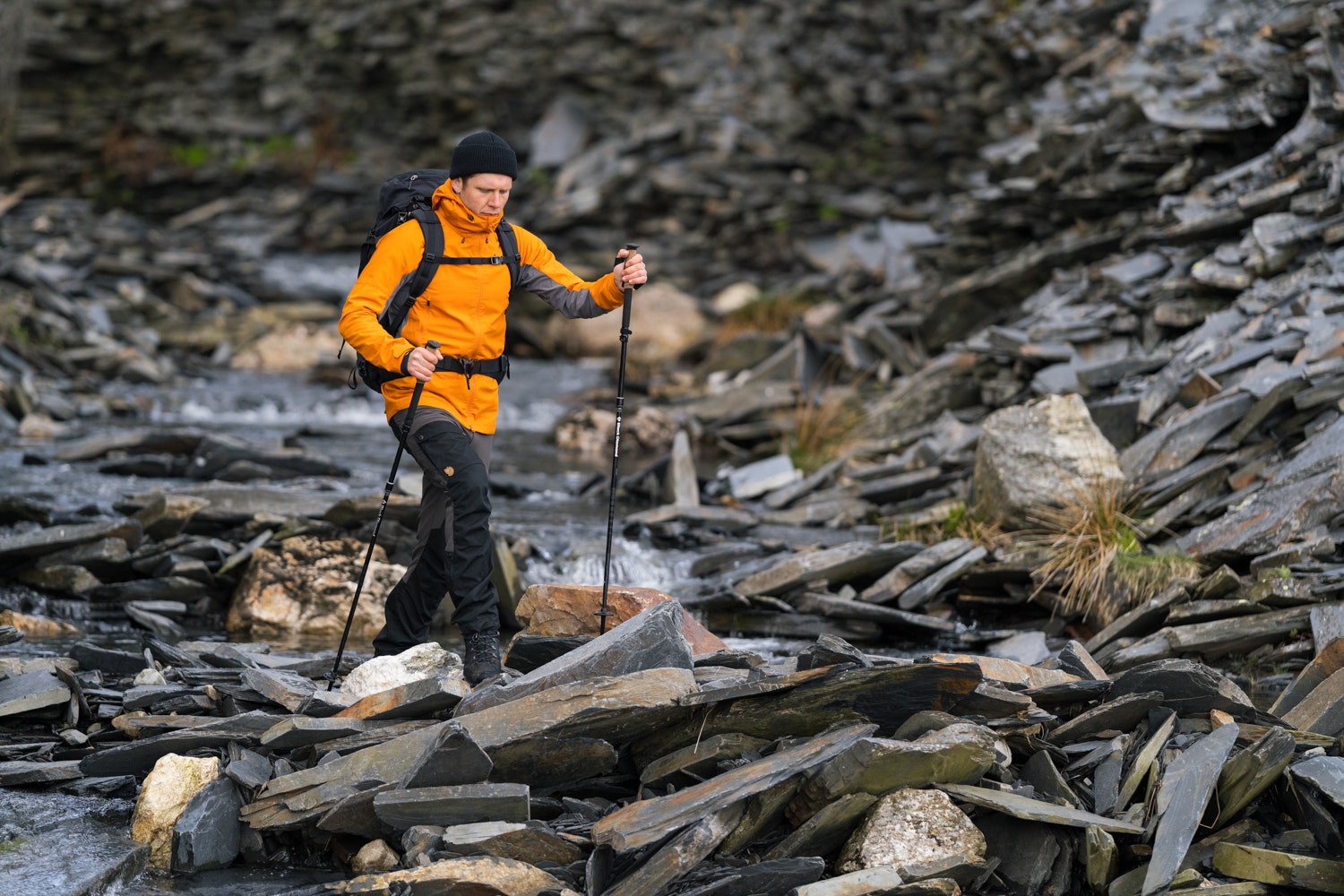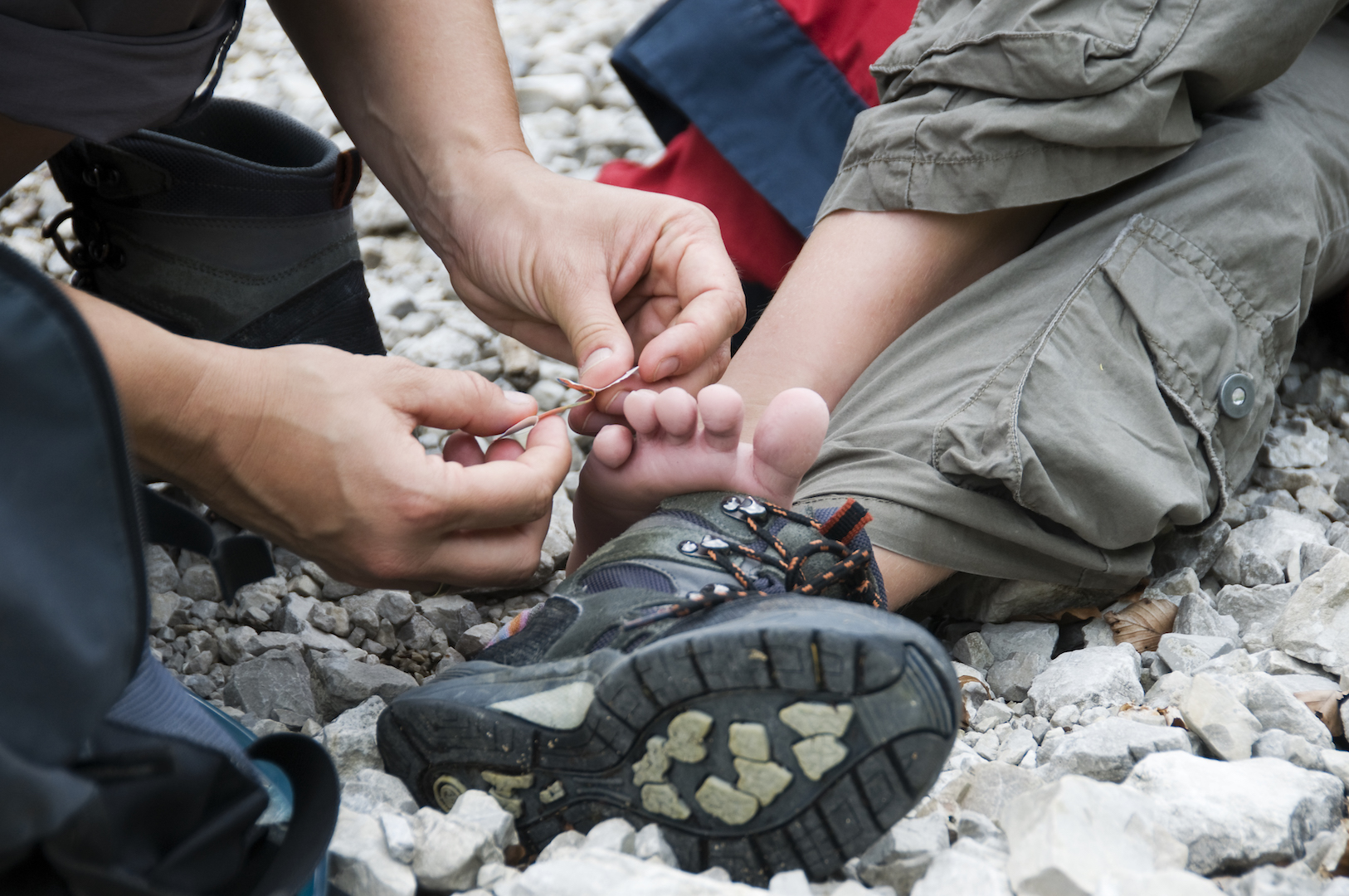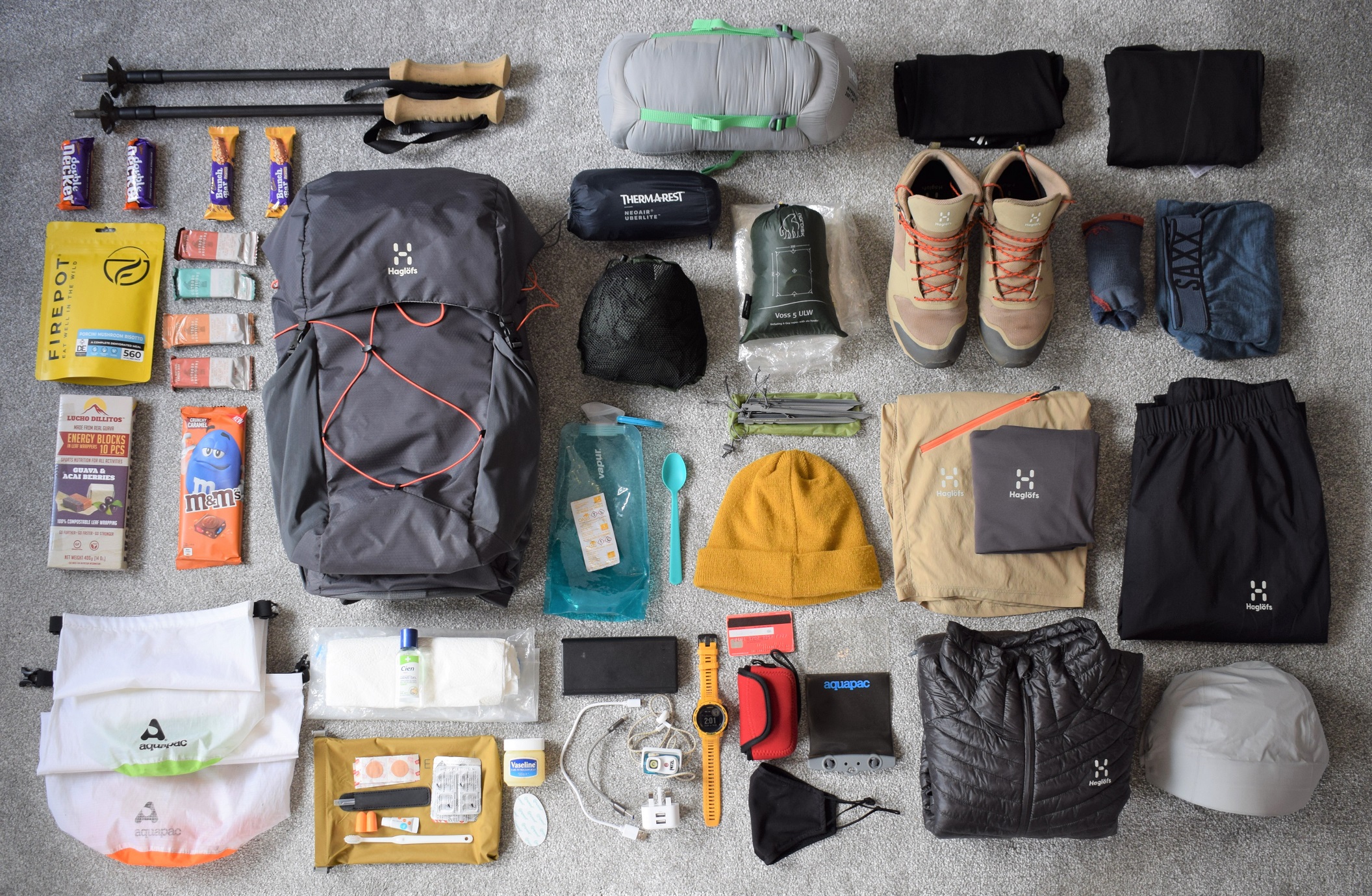It’s a relatively common sight on popular long-distance trails: an unfit, ill-prepared hiker huffing and puffing uphill, moving slowly and gingerly, red in the face with an utterly exhausted look in their eyes. Buckling under the weight of a heavy backpack, and wincing with blister pain at every step, they’re dangerously close to throwing in the towel and going home for a takeaway pizza and Netflix. Insufficient cardio-vascular fitness, muscle strength and trail know-how have sadly ruined their adventure dreams. They’ll never make it to the finish line and never experience that epic sense of achievement you get from completing a long-distance trail.
You don’t want to be this person. The good news, however, is that you don’t have to be a total fitness freak or health hero to cope well with the rigours of long-distance walking. After all, this isn’t 100-mile-a day ultra-running or anything similarly hardcore that requires a huge investment of time, commitment and determination. Instead, long-distance walking is well within the reach of an averagely fit person – in fact, if you’re here because you’re thinking of getting into it, we’d recommend setting your sights on the HIGHLANDER hiking event going in the Lake District this summer.

An ideal beginner’s hike, with HIGHLANDER you can sign up for one of three difficulty levels, all of which guide you through the beautiful fells of the Lake District and to be ready for this event, all you need to do is follow an achievable training regime.
To help you along the way, here’s our comprehensive how-to guide, featuring bucket loads of tips, tricks and advice to ensure you’re physically ready for the trail ahead.
When Should I Start Training?
It’s good to give yourself a long lead-in. Try to start training about three months prior to your trail adventure. This will ensure there’s ample time to slowly build up your stamina and strength, usually by incrementally increasing the distance, ascent and intensity of your hikes week-by-week.
What Type of Activities Should I Do?
Of course, any form of exercise will increase your general health and fitness. Everyday exercise – anything from cycling to the office or working out in the gym to playing team sports or going for a jog – will be a big help and improve your base-level of fitness. Often this type of exercise is easier for people to integrate into their daily lives around work and family commitments.

But, in truth, the best way to train for a long-distance walk is (yes, you guessed it!) simply to go for lots of long walks. You will build strength in the relevant muscles, and increase your stamina and endurance. Whether you’re simply hiking around your local city or town, or heading to the UK’s national parks for a ‘proper’ countryside ramble, by walking you’ll be training in the most effective and relevant way possible.
What Type of Training Plan Should I Follow?
It is tricky to be prescriptive about a training plan because every long-distance walk is different and every walker starts from a different base level of health, fitness and experience. But a good starting point is to research the long-distance trail you’ll be taking on. How many kilometres and how much ascent is there on the longest day? If it’s 30km and 1,000m of ascent, that will serve as a useful target – something to aim for within your training. If you’re able to comfortably achieve such a distance during a training walk a few weeks prior to setting off, that’ll be an immense confidence boost and a reassurance of success. But, equally, remember that during a long-distance walk you’ll be hiking day-after-day, so stamina and endurance are important to build into your training too. You might be able to walk 30km and 1,000m of ascent as a one-off, but can you do it on day 5 with 100km already under your belt?
A good principle in your training is to build things up slowly and steadily, increasing the mileage, ascent, difficulty of terrain and weight of your backpack over time – small, incremental improvements are the key to success. This is because they are realistic. Trying to jump from a 10km flat walk to a 30km mountain epic is setting you up for failure. But small increases of 2km or 3km each week over a few months are more than achievable.

A common strategy is to focus on shorter walks during the week, and longer hikes at the weekends. Perhaps you can try and walk for an hour or two each weekday, focusing on a brisk pace. Integrating this walking into your daily routine – by walking to work, to pick up the kids from school, or to do the grocery shopping – may make it more achievable. Then on Saturday and Sunday, perhaps you can take on back-to-back bigger hill walks or mountain climbs, of about 15km or longer. This will build good stamina and speed.
Of course, however, it’s important that a training plan works for you. It doesn’t necessarily need to be ultra-serious and super-planned. For some people, a rigid, structured spreadsheet of goals will be a great motivator, while for others going with the flow and listening to their body will be the key to success. Equally, some walkers will prefer to focus on shorter but daily training walks, while others will focus on less frequent but bigger training days; and some will build their fitness more through the gym and running, while others will refuse to ever get above 4km/hr. Furthermore, some would-be hikers will train for months before hitting their chosen trail, while others will cram their last-minute training into the month before. Ultimately, with all of these decisions, it doesn’t really matter what route you take: it’s all about finding your own path to improved fitness.
How to Replicate the Realities of Trail Life?
If you complete all of your training hikes in Nike trainers and only carry a very small rucksack, then it’ll be a total shock to the system when you finally find yourself on the Pennine Way wearing heavier boots and carrying a 60L monster of a backpack.
Instead it’s very sensible to wear your hiking boots and a fully-laden backpack during your training hikes, in order to accurately mimic the conditions you’ll experience on trail. This will help you break-in your footwear and get accustomed to the challenge of carrying a heavy pack.

Another important thing to consider is the terrain you’ll encounter. Will it be relatively flat with good paths, or wild and rugged pathless ground with steep ascents? Where possible try and replicate this in your training hikes. If the trail you’re set to hike is very hilly, there’s only one solution really – you need to hike up hills during your training and get use to the ascending and descending. For many, this will involve leaving the city and travelling to a mountain range at the weekend, but equally fast-walking a set of repetitions up your local steep road is a viable alternative too.
How Do I Stay Motivated During my Training?
This is a personal thing and you need to figure out what works for you. Some people won’t need any motivation – the fresh air, views and escapism will be all they need. For others, perhaps listening to a podcast or audiobook will help them put in the big miles or long hours, while for others it’ll be about sharing the hikes with like-minded friends who encourage them to keep getting out.
If you’re achievement-orientated and love to set yourself a goal, another brilliant way to motivate and structure your training would be set yourself a peak-bagging target, such as walking all 214 of the Wainwright fells in the Lake District.
How Should I Prepare Mentally for the Challenge of Long-distance Walking?
Long-distance walking isn’t just a physical battle, it’s a mental one too – can you keep plodding on when you’re feeling exhausted? Will you be able to stay positive when it’s raining, your feet are hurting and you haven’t had a shower for three days? Or will the temptation to bail on the whole idea play on your mind and prove irresistible?

A resilient, gritty, glass-half-full mindset is crucial to a successful trail attempt, and – while teaching such a state of mind isn’t particularly easy – there are some little tactics you can use to develop it. For example, set realistic expectations from the beginning. If you’ve told yourself to expect torrential downpours, sleepless nights in your tent, and painful blisters, then you won’t be devastated when they hit. Other useful strategies include: focusing on small bite-size goals (instead of being overwhelmed by the enormity of the overall task); celebrating your successes and the good moments; learning from your mistakes (rather than being too harsh on yourself); and ultimately remembering to have fun (you could be stuck in the office, after all).
However the best way to learn this mindset is out on the trail. If during your training hikes you encounter foul weather, and blisters, and fatigue, and getting lost, and whatever else the trail Gods send your way, you’ll learn a lot from these experiences, even if you struggle at the time. Experience breeds resilience, positivity and confidence.
What Else Should I Be Doing on a Day-to-Day Basis?
Alongside exercise, make sure you eat and drink healthily, sleep well and minimise stress – all of these things will boost your all-round energy, enhance your mental resilience and help you maintain a healthy weight and BMI well-suited to the rigours of hiking.
How Will my Kit Choices Affect my Chances of Success on the Trail?
Being comfortable, dry and protected in your footwear and clothing – but without being excessively weighed or slowed down – is the aim here. The best way to figure this out (yet again) is to get out there and learn what kit works well for you (and what doesn’t), and then refine and perfect your set-up over time.

Out of all kit considerations, we’d suggest three key things. First, consider using hiking poles – they can power you uphill, give you rhythm and improve your balance. Secondly, whatever you do, don’t wear stiff, rigid, heavy leather boots – they’ll be clunky, slow you down and (most likely) give you blisters. Instead consider trail shoes or lightweight, modern boots that are way comfier with good forward motion and a nice ride. And thirdly, keep your backpack as light as you possibly can – the less weight on your back, the happier (and faster) you’ll be on trail.
Related: Highlander | Long Distance Hiking Challenge Comes to the Lake District
Once you’re set with the kit and you’ve dipped your toes into the long-distance world, the next step is signing up for your first proper challenge. If you’re able to make it to the Lake District this June on the 22nd-26th then it would be a crime to miss the HIGHLANDER event. Whether you join the 25k, 50k, or 100k, you’ll enjoy a route carefully designed by local experts to be a nice balance of accessible and challenging. Signing up means you’ll be provided with accommodation, food and drink, and by far the most important thing: The official title of ‘Highlander’ upon completing the challenge.
Find out more about HIGHLANDER’s events at highlanderadventure.com



